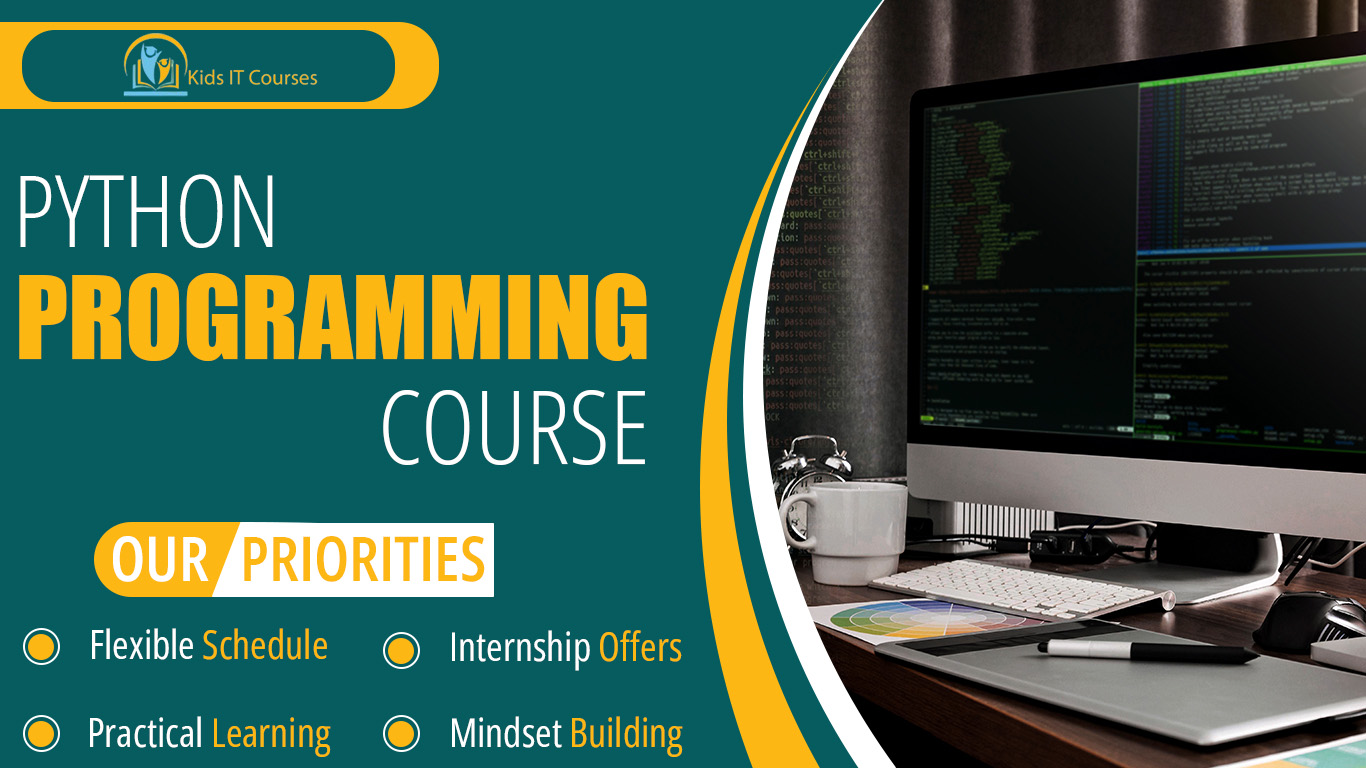
Python Programming Course for Kids
- This fun and interactive course introduces kids to Python programming — one of the easiest and most powerful coding languages.
- Through exciting projects and hands-on activities, kids will learn how to write simple programs, build games, and solve problems with code. Python is widely used in web development, data science, and AI, making it a great choice for kids looking to explore the digital world.
Definition
Kids learn to write code using Python, one of the easiest languages. It’s simple to read, fun to use, and perfect for beginners.
Python helps kids break big problems into small steps. It trains their brain to think clearly and logically.
They build mini-games, animations, and quizzes using Python. It makes learning feel like playtime with purpose!
Kids use real coding tools used by professionals. They feel like real programmers while having fun.
When their code works, kids feel proud and excited. This builds their confidence and keeps them motivated.
Python lets kids try new ideas and see what happens. It’s a safe way to explore and create with code.
Python is used in apps, AI, websites, and more. Learning it now gives kids a great head start in tech careers.
Importance
Python is simple and uses easy words. Kids can learn it quickly, even if they are beginners.
It helps kids break big problems into small steps. This builds strong thinking and problem-solving skills.
Python is used in apps, games, websites, and robots. Kids learn a language that’s used by real programmers.
Kids can make games, stories, and animations. Learning becomes fun, creative, and exciting.
Python is used in AI, data science, and automation. It gives kids a head start in future tech jobs.
When their code works, kids feel proud and happy. It motivates them to keep learning and exploring.
Python builds a strong base for learning other programming languages later. It’s a perfect starting point for young coders.
Advantages for Freelancing Purpose
Python uses simple words and clean code. Kids can understand and write it easily, even as beginners.
- It helps kids think step by step and solve problems. Coding in Python improves logic and focus.
Kids can create small games, apps, or stories. It makes learning fun and exciting.
Python is used in real-life tech like robots and smart programs. Kids feel excited to work with future technology.
They can turn their ideas into real projects. It inspires them to create, test, and explore.
Kids use real tools like coders and engineers do. It builds strong computer and digital skills.
Python is used in many tech jobs and companies. Learning it now gives kids a powerful head start.
Session 1 : What is Python?
- What does Python do in real life? (games, apps, robots, websites)
- Why it’s great for beginners
- Setting up a kid-friendly environment (Replit, Thonny, or Trinket)
- Writing your first Python program: “print(‘Hello, World!’)”
Session 2 : Variables & Data Types
- What are variables?
- Storing words (str), numbers (int, float), and True/False (bool)
- Fun activity: create your own superhero profile using variables
Session 3 : Input & Output
- Getting input from users with input()
- Showing results with print()
- Mini project: Make-your-own-mad-libs or a name echo game
Session 4 : Decision Making with If/Else
- Writing smart code that makes decisions
- if, elif, else in real life (games, quizzes, puzzles)
- Build a personality quiz or number guess game
Session 5 : Loops – Repeat It
- for loops and while loops explained simply
- Repeating actions, counting, or checking guesses
- Fun projects: countdown timer, multiplication table, repeat challenge
Session 6 : Functions – Reuse Your Code
- What is a function and why use it?
- Writing your own simple functions
- Calling functions to organize your program
- Build a mini calculator or birthday wish generator
Session 7 : Lists (Arrays) and Storage
- Storing multiple items using lists
- Accessing items, adding, sorting
- Mini project: favorite foods list, score tracker, or name sorter
Session 8 : Final Project – Show What You Know
- Choose from:
- Text-based game (Adventure or Quiz)
- Custom calculator
- Mini chatbot
- Add user input, loops, logic, and more!
Bonus Materials:
- Python syntax cheat sheet
- Challenge cards & mini puzzles
- Debugging tips for beginners
- Certificate of Completion
